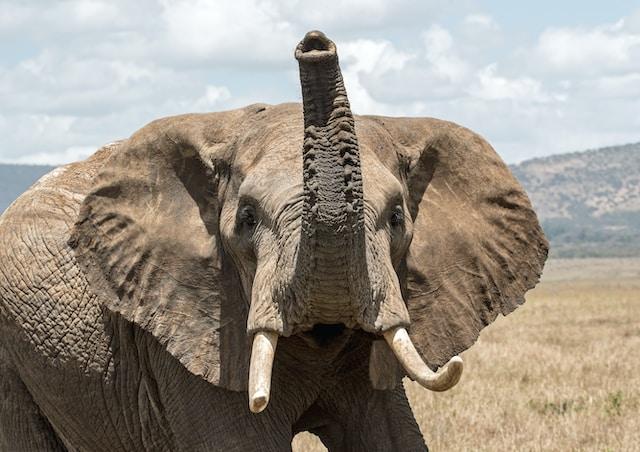Elephant is a fascinating creature known for its intelligence, social behavior, and impressive size. They are also known for their unique vocalizations and sounds, which play a critical role in their communication and social behavior.
Elephant – Trumpeting
Trumpeting is perhaps the most iconic of all elephant sounds. This is a loud, trumpet-like call that is produced by blowing air through the trunk. Trumpeting is used in a variety of contexts, including during aggressive displays, when announcing arrival, or when expressing excitement.

Elephant – Rumbling
Another common elephant sound is rumbling. Rumbling is a low-frequency sound that is produced by the elephant’s vocal cords, and can also be felt as vibrations in the ground. Rumbling is used to communicate a range of emotions, including happiness, excitement, or distress. For example, mother elephants use rumbling to communicate with their young and reassure them when they are frightened.

Grunting and Growling
Grunting and growling are other sounds produced by elephants. These sounds are typically associated with aggressive or defensive behavior, and are often used during conflict. However, they can also be used in non-threatening contexts to express excitement or happiness.
Snorting and Barking
Snorting and barking are two more sounds produced by elephants. Snorting is a short, sharp exhale through the trunk, which is often used to express surprise or alarm. Barking, on the other hand, is a short, staccato sound that is used during aggressive displays.
Infrasonic Sounds
In addition to these audible sounds, elephants also produce infrasonic sounds that are below the range of human hearing. These sounds can travel for long distances and are thought to play a crucial role in long-distance communication between elephants. Infrasonic sounds are produced by the elephant’s larynx, and can also be felt as vibrations in the ground.

Elephant – Tactile Communication
Tactile communication is also an important part of elephant communication. Elephants use touch to communicate a range of emotions, including affection, reassurance, or dominance. For example, elephants may use their trunks to touch each other’s faces or bodies as a way of greeting or showing affection.
Scientific research has shed light on the complex nature of elephant vocalizations and sounds. For example, researchers have found that elephants can use infrasonic sounds to communicate with each other over distances of up to six miles. They have also found that elephants are capable of using vocalizations and sounds to convey a range of emotions, including happiness, sadness, and anger.

Elephant Conservation
Understanding elephant vocalizations and sounds is not only important for scientific research, but also for conservation efforts. By understanding how elephants communicate with each other, we can better protect their habitats and promote their well-being. In captivity settings, knowledge of elephant vocalizations and sounds can also inform care and welfare practices, helping to ensure that elephants in captivity are well-cared for and able to express their natural behaviors.

Conclusion
In conclusion, elephant vocalizations and sounds are a crucial part of their communication and social behavior. From trumpeting to rumbling to infrasonic sounds, each sound has a unique meaning and plays a critical role in the lives of these gentle giants. As we continue to learn more about these incredible animals, we can gain a greater appreciation for their complexity and the importance of understanding their vocalizations and sounds.

